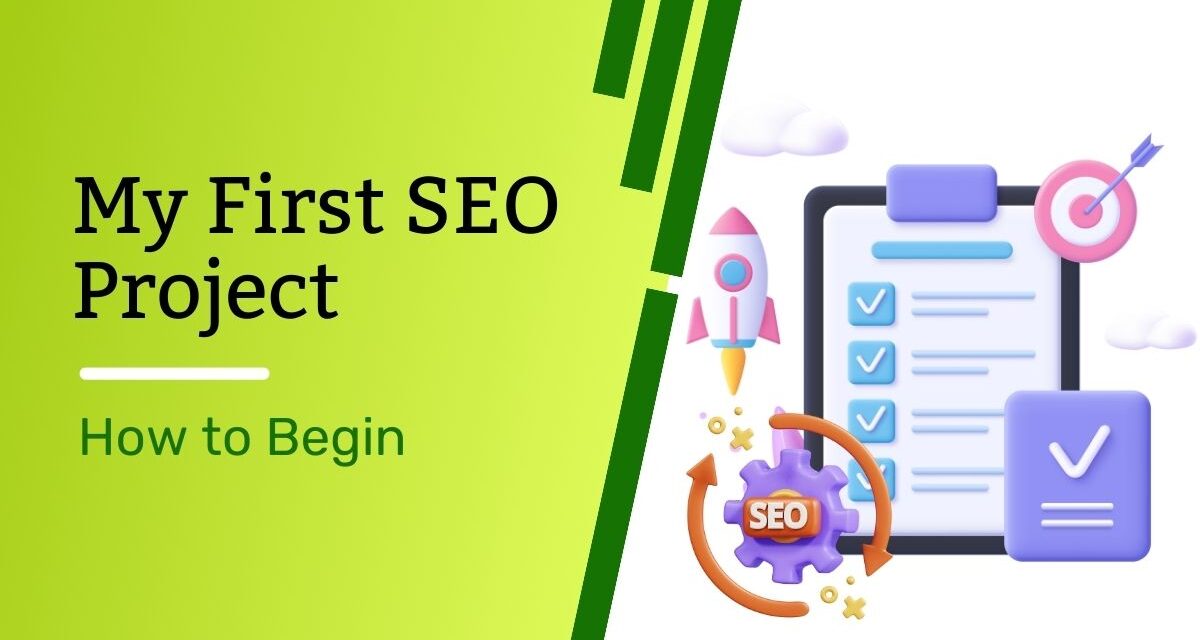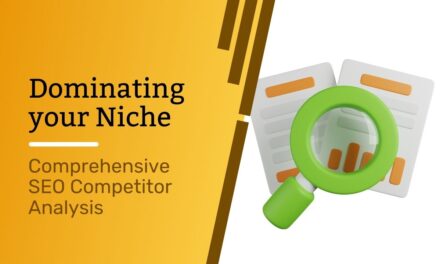Starting your first SEO project can be a little overwhelming, but don’t worry – you can learn SEO. The best way to start a successful SEO career as a beginner is to be open to new ideas and willing to try new things. Ready to get started? We’ll give you a simple step-by-step SEO plan!
Let’s get some things straight
SEO is not a magic spell. Promises like “You’ll be ranked number one on Google in just one week” are simply not real. Learning SEO takes time and effort. Search engine optimization, or SEO, is not just about making search engines happy. It’s about making your website useful and easy to use for your visitors. If your SEO work truly makes your site better for people, Google will take notice and give you a higher ranking in search results. Now that we’ve cleared that up, let’s begin!
Step 1: Check Your SEO Knowledge
Before you start your SEO project, it’s important to assess your current understanding of SEO.
Are you familiar with free SEO tools like Google Analytics or Google Search Console? If not, that’s okay! There are many resources available to help you learn the basics of SEO.
Now that you have a better understanding of SEO, let’s get started on your project!
Step 2: Write useful and unique content for your target audience
The most important goal of your website is to provide a positive experience for your visitors. To achieve this, you should provide them with high-quality content that they find valuable. This content should also be original. Things like duplicate content, overused phrases, and unnecessary words don’t make for a good user experience.
High-quality content is easy to use and offers benefits to visitors. Why is this important? Search engines use crawlers to gather information on the web. These crawlers follow links and add content from websites to the search engine index. They don’t have much time to do this task. The easier it is for them to understand your content, the better they can index it and share it with other users in the search engine results pages.
On the other hand, internet users are not very patient when it comes to searching for information. Our reading habits online are different from our reading habits offline. The easier your texts are to read online, the better.
To make it easy for search engines and users to understand your content, it needs to have a logical structure.
Here’s how to create high-quality content.
Keyword research: What words should I use?
To make sure people who visit your website find what they’re looking for, you need to use the right words in your content. These words are called keywords. People use keywords to search for things on the internet. So, you need to ask yourself: What words might the people I want to visit my website use to find what I have to offer?
You don’t have to think about this for your entire website at once. Instead, think about each page of your website separately.
Next, you need to think about what people want when they visit your website. Do they want to buy something, or do they want to learn something new?
There are two types of keywords: “transactional keywords” and “informational keywords.”
Transactional keywords: When people use these words, they are very likely to want to buy something. Examples include “order xy” or “buy xy.”
Informational keywords: When people use these words, they want to learn more about a topic or get recommendations. Examples include “apple pie baking ideas” or “making your own Christmas decorations.”
Depending on what people want, you can also use “long tail keywords.” These are more specific keywords that fewer people search for. However, when people do search for long tail keywords, they know exactly what they’re looking for. So, if you use long tail keywords, there’s a good chance that people who visit your website will find exactly what they were looking for.
In general, generic keywords, which are short and broad terms, are more popular and searched for more often. However, they are also more competitive and may not always accurately reflect what users are looking for.
Long tail keywords, which are more specific and descriptive, are searched for less often. However, they are more likely to match the exact needs of users. This is especially important for online stores, as the closer you can match a user’s search, the more likely they are to buy something from your store.
To find the most important keywords for your website, follow these steps:
For each web page address (URL), choose the most relevant keyword. This keyword will usually be related to the page’s category or the product it is about.
Use Google search to find other search terms that are often used along with your chosen keyword. Google suggests these terms based on how often users search for them in combination with your keyword. You can see these suggestions at the bottom of the Google search results page.
For example, if you are writing about “my first seo project,” you should also include the keywords “seo project example” and “how to do seo” in your content.
Here’s a bonus tip: You can also look at the URLs of your competitors that are ranked highest on Google for your main search term. This will show you how they have used keywords in their content.
This is a simple and effective way to identify the most important keywords for your website. If you want to learn more about keyword research, check out Eric Kubitz’s 3-minute keyword research guide.
Writing Effective Content: Using Keywords Effectively
Even though we’re talking about keywords, creating high-quality content isn’t just about stuffing a paragraph with important words to rank higher on Google. Instead, keywords should serve as a framework for your content to ensure it meets the needs of your readers.
Of course, you should still include these keywords in your website’s text. This is how Google finds and indexes your website for the right topics.
You should also use your main keywords in other parts of your URL to strengthen your “focus keyword.”
Include the main keyword in your page title.
Use the main keyword in your meta description.
Include the main keyword in your main heading (H1 tag).
A process called “TF*IDF analysis” can also help you make sure your text is aligned with the user’s intent. This involves analyzing the top-ranking web pages for a search term and identifying the other words (terms) they use to cover the topic (in this case, the search term). The resulting curve shows the “term weighting” for a specific search term.
This might sound complicated at first, but you don’t have to do the term weighting yourself.
Additional Tips:
Use a natural language flow and avoid keyword stuffing.
Focus on creating informative and engaging content that your readers will find valuable.
Use keywords throughout your content, but don’t overdo it.
Keep your content up-to-date and relevant to your target audience.
By following these tips, you can create high-quality content that is optimized for search engines and that will engage your readers.
A TF*IDF analysis can help you identify relevant words and phrases that you should include in your content.
Organize your content in a way that makes it easy for both users and search engines to understand its value.
A well-structured text makes it easier for users to navigate and for search engines to understand the content.
Organize your content in a way that clearly conveys its usefulness and relevance to users and search engines.
H1 headers are the most important headings on your website and should only appear once per page. They should summarize the main topic of the page and include your focus keyword.
Break up your text into clear and concise paragraphs to make it easier for readers to follow.Use subheadings to further organize your content and make it easier for readers to quickly scan for relevant information. Subheadings should provide a brief overview of the content below them.Use bold and italics sparingly to draw attention to key words or phrases within your content.
Keep your website text short and to the point. Longer, more complex sentences may be suitable for speeches, but on the internet, simplicity is crucial.
This means your writing should be concise and focused.
Avoid using unnecessary words that don’t add value to your message.
Speak clearly and stick to the topic at hand.
Use simple sentence structures with one main clause and one subordinate clause whenever possible.
Aim to keep your sentences within two lines of text to enhance readability.
Step 3: Design a user-friendly website structure
For search engines and users to navigate your website easily, choose a flat page structure. This means users can reach any page from any other page in three or fewer clicks.
Use “breadcrumb navigation” to show users their location on your website and provide quick access to higher-level directories.
Step 4: Ensure your website is discoverable by search engines
After creating high-quality content, structuring it effectively, and designing a user-friendly page layout, you need to ensure that search engines can access and index your website. This is crucial for appearing in search results.
To check if specific URLs are already indexed, perform a Google search using the “info:” operator before the URL of your page. If your page is indexed, it will appear in the search results.
Additional Tip:
Aside from “info:”, you can explore other Google “search operators” to simplify your daily tasks. Check out our article for practical Google SEO search commands.
When the Googlebot visits your website to follow links, crawl, and index URLs, it has a limited timeframe, known as the “crawl budget.” To make the Googlebot’s work more efficient, consider the following:
Create a robots.txt file: This small text file resides in your website’s root directory. It informs the Googlebot which directories it can and cannot crawl. We’ve provided a detailed guide on creating and using robots.txt.
Create an XML sitemap: This file contains a list of all crucial URLs on your website. Search engines use this file for crawling. Our practical guide explains how to create XML sitemaps and highlights the essential aspects.
Use an SSL certificate: This enhances your website’s security and provides benefits in Google search results. We’ll guide you through setting up an SSL connection.
Remember to make your website accessible to both mobile devices and computers.
Mobile optimization is now a standard practice when creating websites, but it’s still not always done. Are you unsure if your first SEO project is mobile-friendly? Google’s free mobile-friendly test can help you check your website’s mobile optimization.
Mobile optimization is important because it can affect your website’s ranking in Google search results. Even more importantly, you want to make sure your website is easy to use for all visitors. Since more than half of your website visitors will be using their smartphones, it’s crucial to optimize your website for mobile devices.
Wrapping up
Throughout this article, we’ve aimed to provide a simple and comprehensive overview of the key steps involved in your first SEO project. We hope this information will set you on the right track as you embark on your SEO journey. Keep in mind that SEO is an ongoing process that requires continuous improvement to ensure you’re offering users the best possible content and experience.





